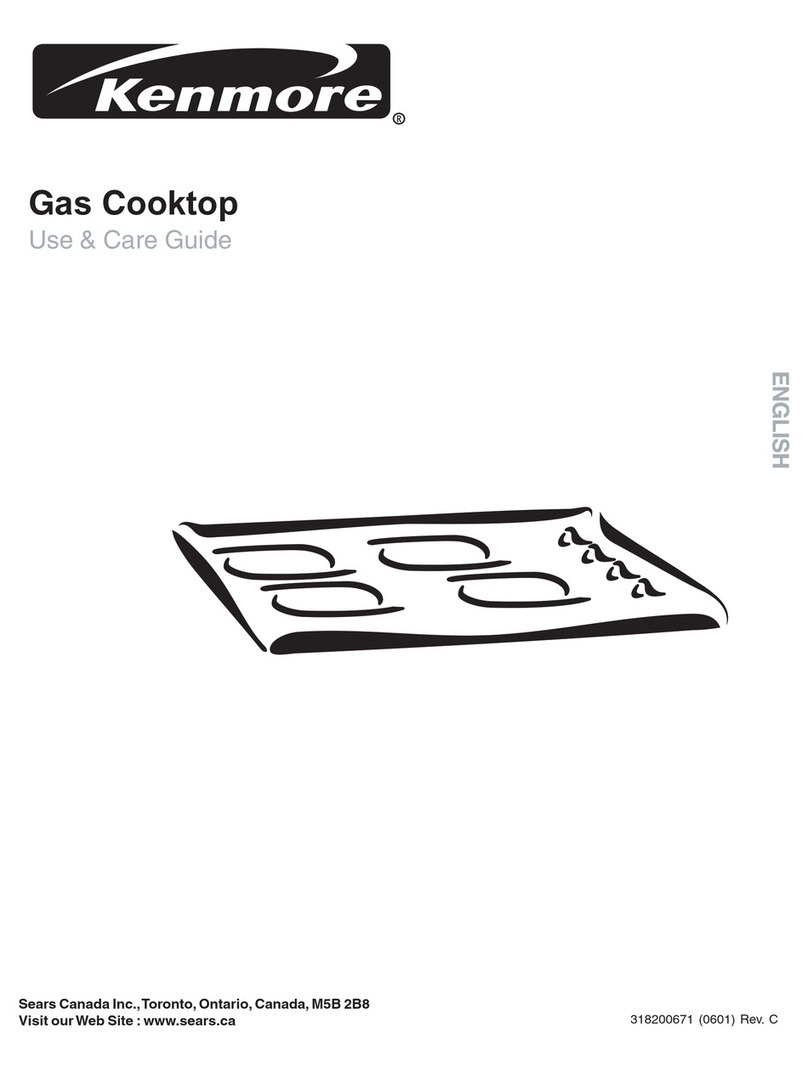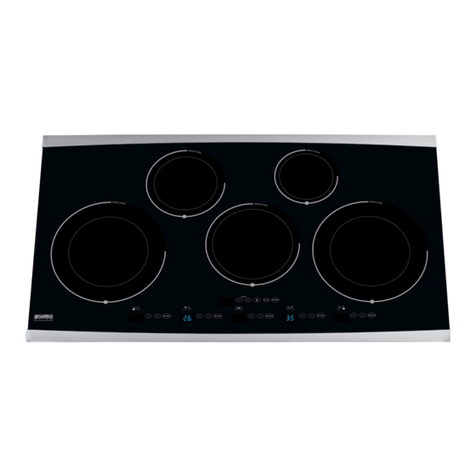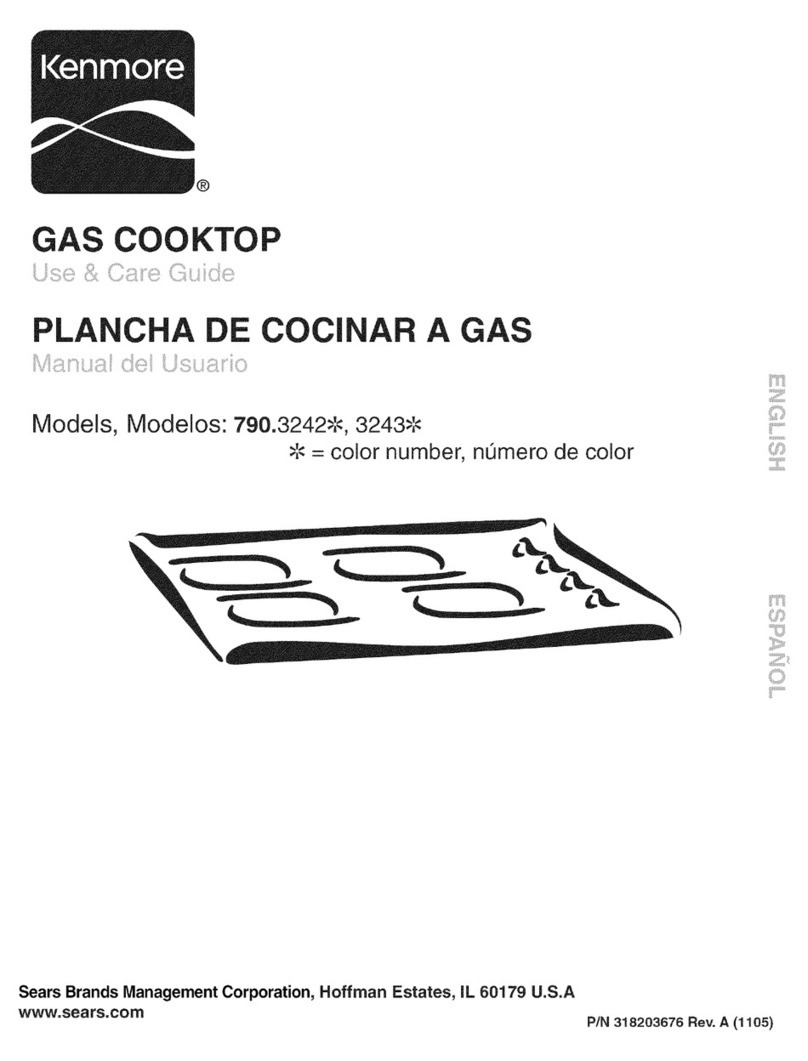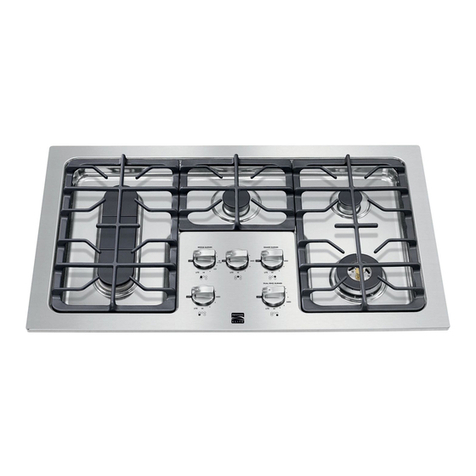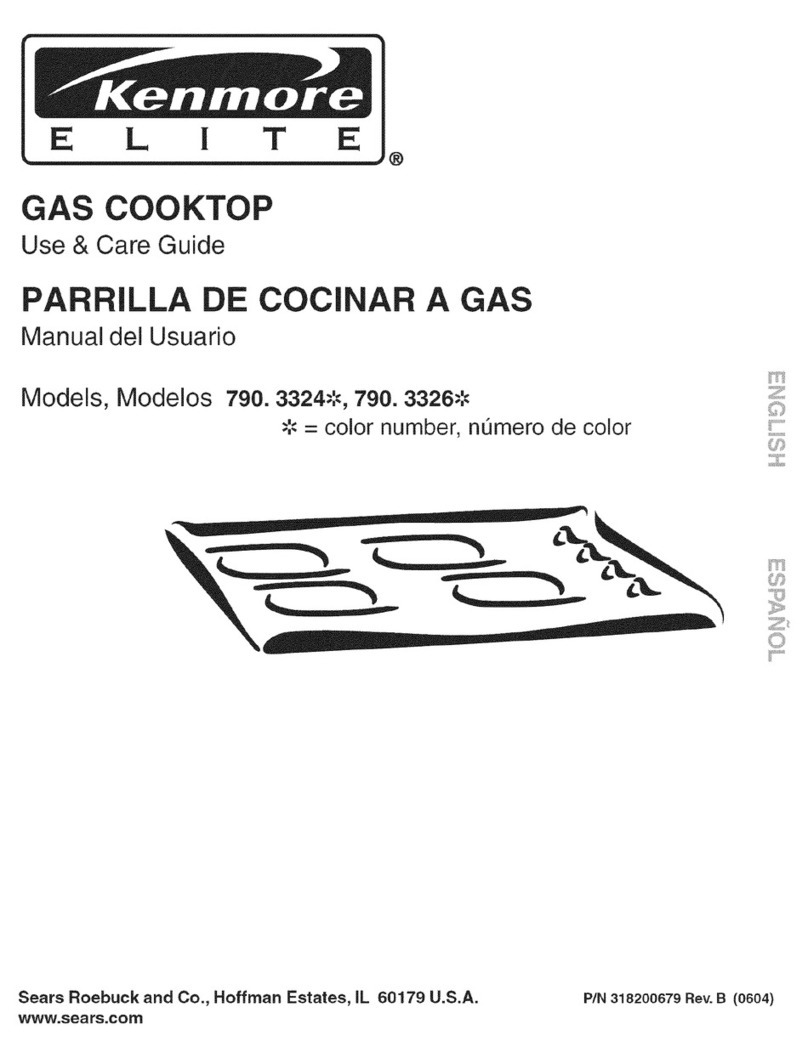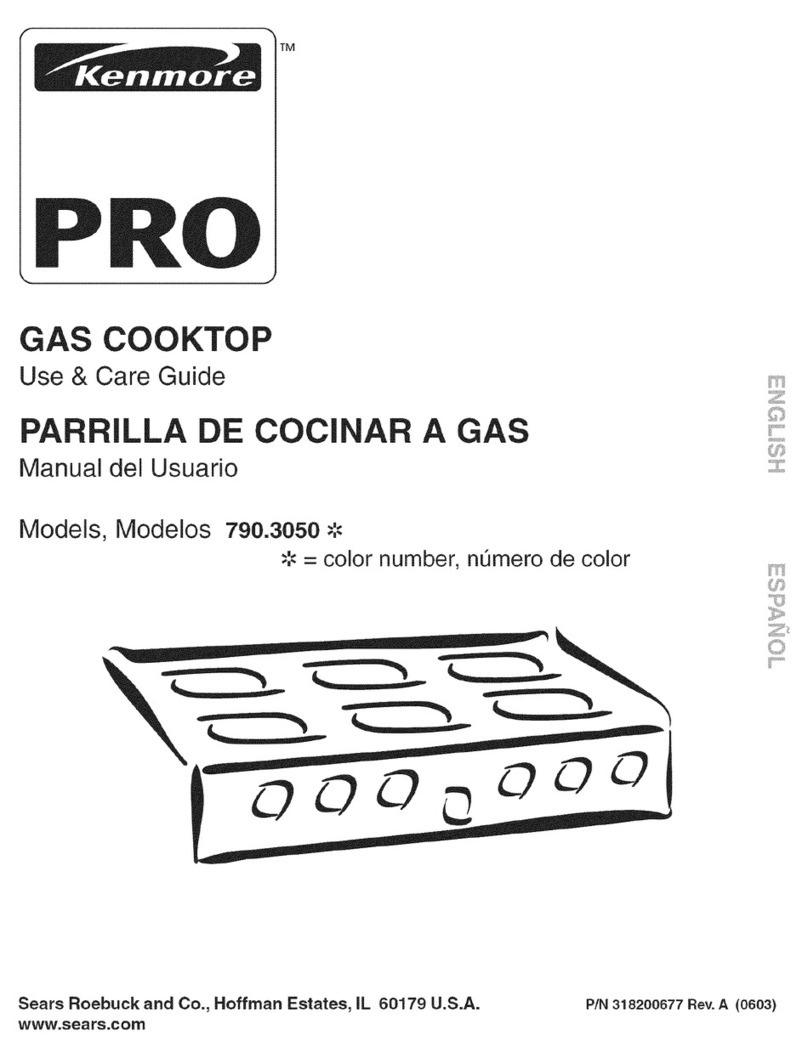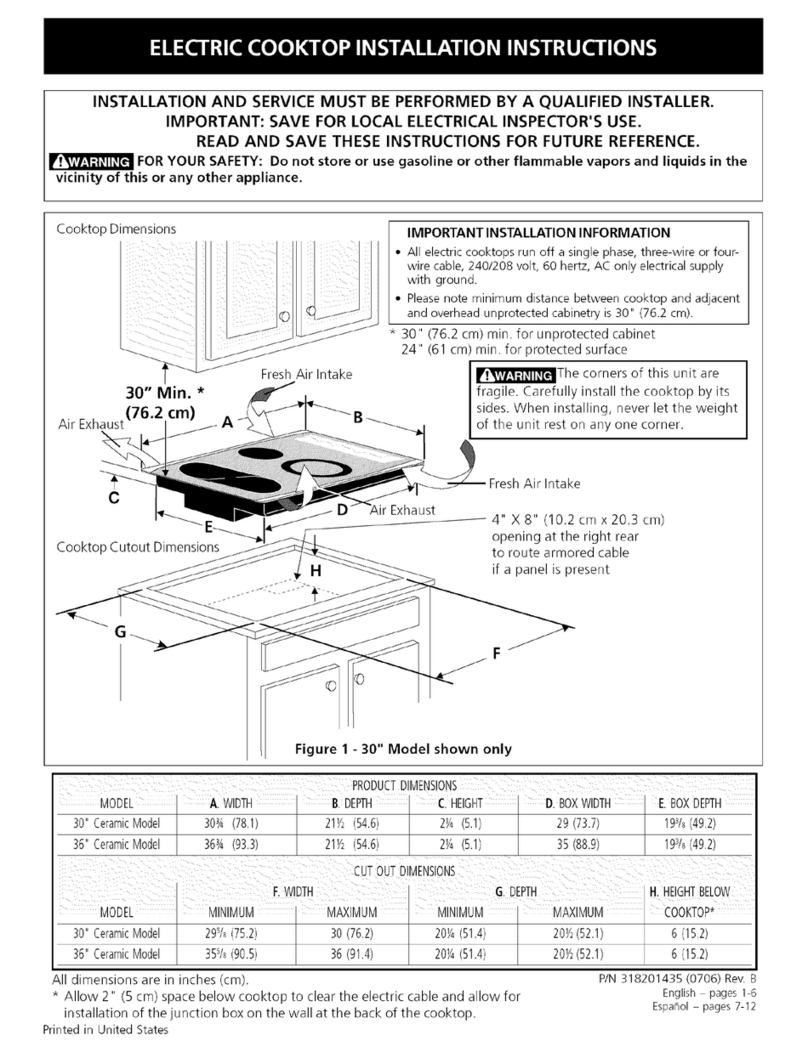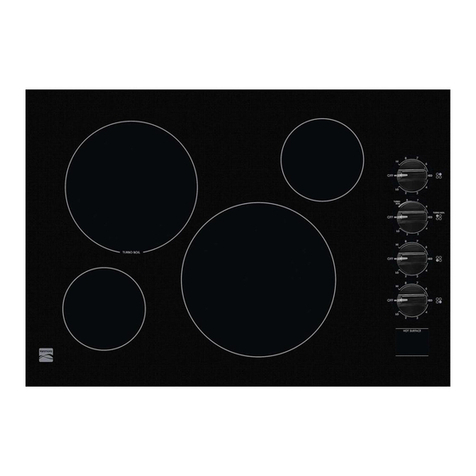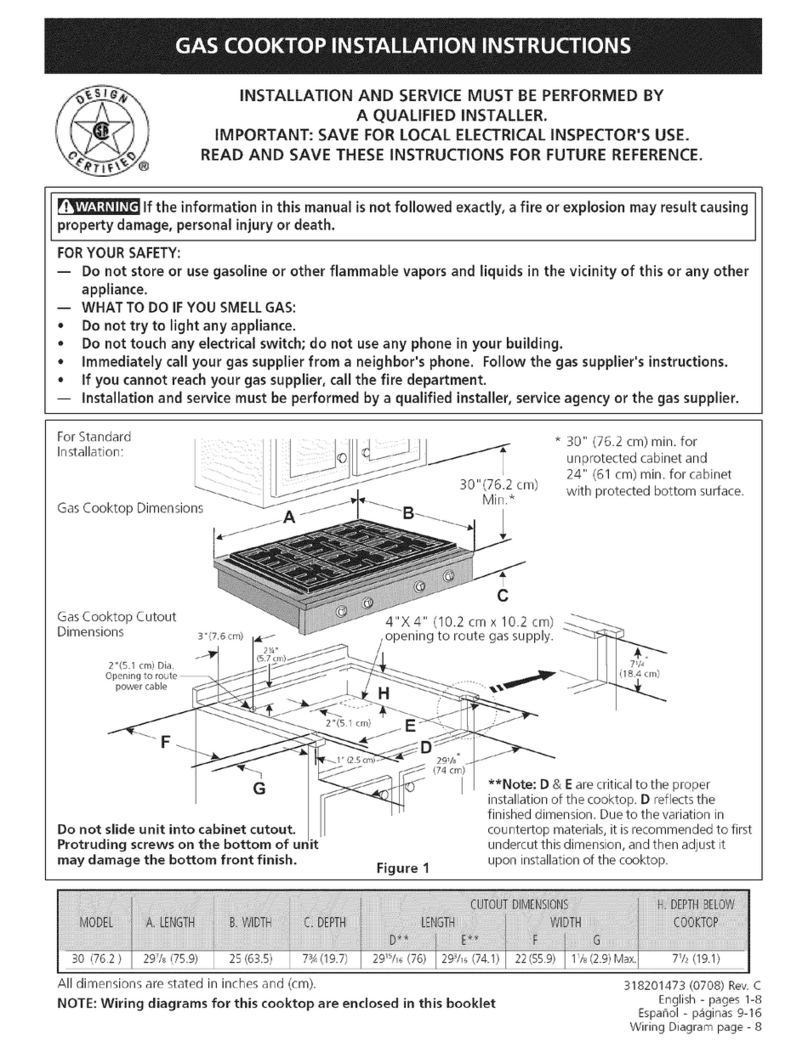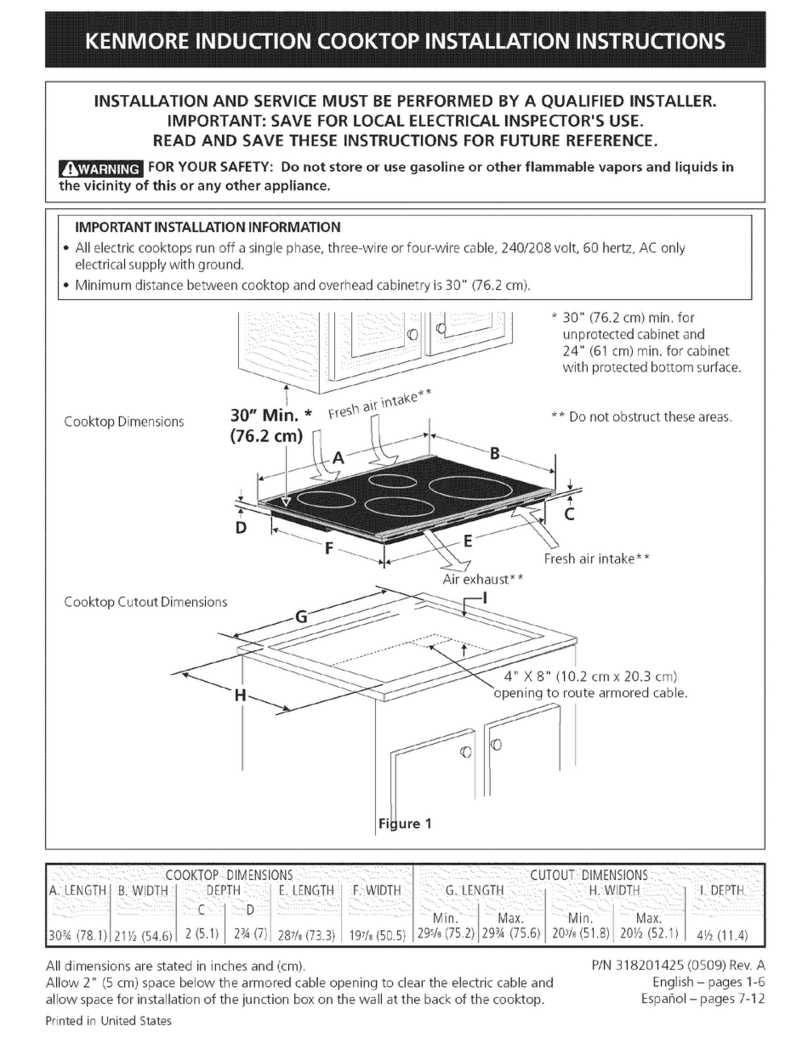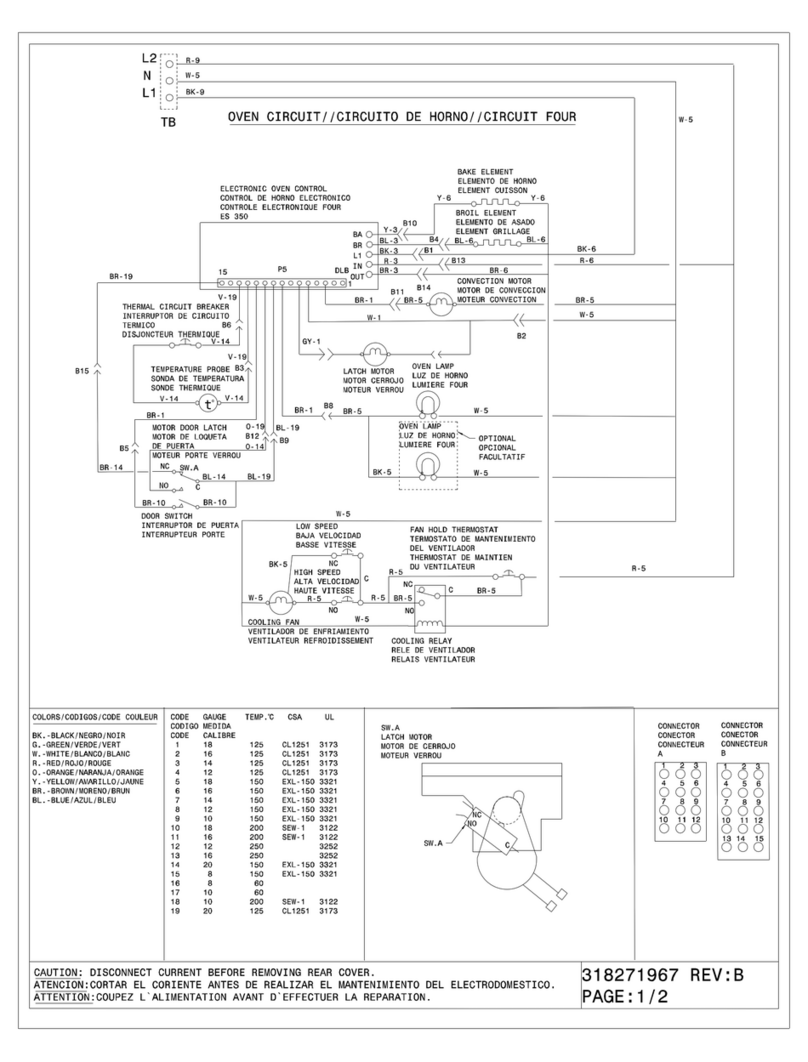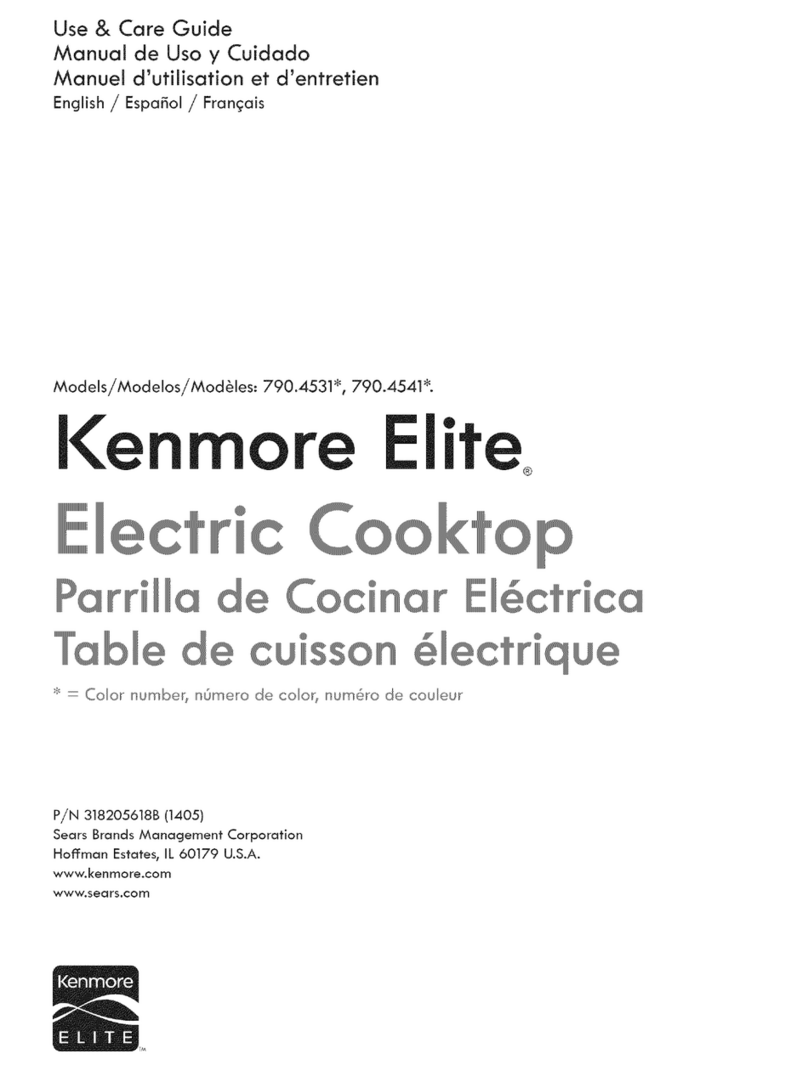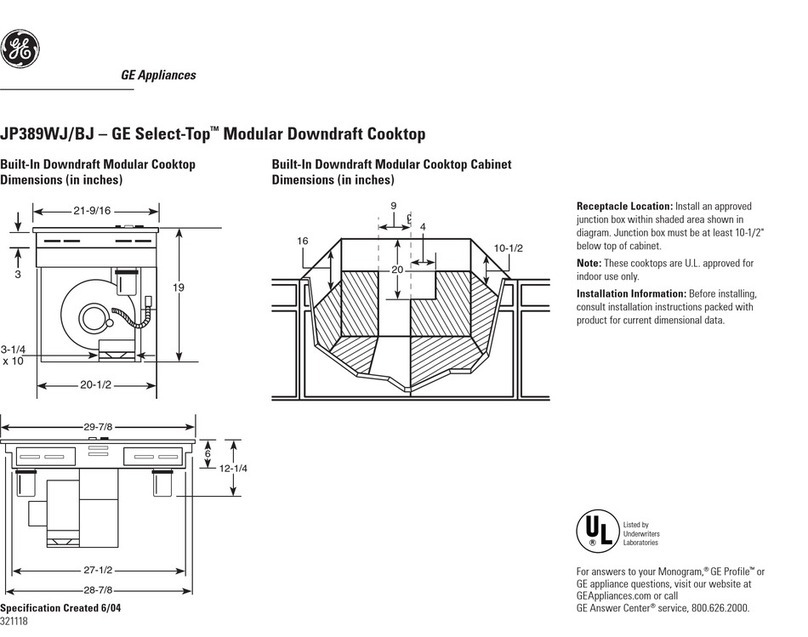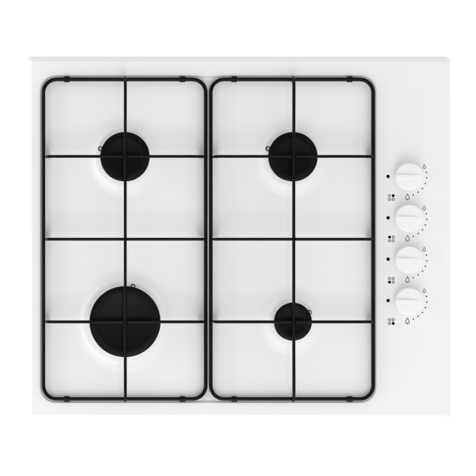iNSTALLATiON UNSTRUCTIONS
iMPORTANT: SAVE FOR THE LOCAL ELECTRICAL INSPECTOR'S USE
EiectricamRequirements
CAUTION, FOR PERSONAL SAFETY:
DO NOT USE AN EXTENSION CORD WITH THIS
APPLIANCE.
REMOVE HOUSE FUSE OR OPEN CIRCUIT
BREAKER BEFORE BEGINNING INSTALLATION.
This appliance must be supplied with the proper
voltage and frequency, and connected to an individual
properly grounded branch circuit, protected by a cir-
cuit breaker or time delay fuse, as noted on the rating
plate. (Rating plate is located on door frame_)
Wiring must conform to National Electric Codes.
If the electric service provided does not meet the above
specifications, it is recommended that a licensed elec-
trician install an approved outlet.
Because range terminals are not accessible after range
is in position, use flexible service conduit or cord_
Step t
Preparethe Opening
1t/2" spacing is recommended from the range to adja-
cent vertical walls above the cooktop surface°
Allow 30" minimum clearance between surface units
and bottom of unprotected wood or metal top cabinet,
and 15" minimum between countertop and adjacent
cabinet bottom.
"Yourrange, like many other household items, is
heavy and can settle into soft floor coverings such
ascushioned vinyl or carpeting. When moving the
rangeonthistype offlooring, use care,and it isrecom-
mended that thesesimple and inexpensiveinstructions
be followed.
The range should be installed on a sheet of plywood
(or similar material) as follows: When the floor cover-
ing ends at the front of the range, the area that the
range will rest on should be built up with plywood to
the same level or higher than the floor covering. This
will allow range to be moved for cleaning or servicing.
Step 2
Prepare for E_ectricaaConnection
Use a 3-conductor, or if required, a 4-conductor range
cord set as noted below_
For Ranges Less than or Equal to 11.1 KW
9-5255 3 cond. 4' 50A-125/250V
9-5237 4 cond. 4' 50A-125!250V
4
OUTLET BOX INSTALLED LEFT OF _ OF RANGE
(_ OF RANGE
WALL. _ "_" "_"_ 7',_" "'_"-_
CORD---J
Step 3
1, Locate connector block at the bottom rear of range
and remove rear wiring cover°
2. Directly below the connector block is a hole with a
knockout ring for accommodating conduit fittings°
Brackets provided are used to support the flexible cord
strain relief, which must be securely attached to the
cord set.
WIRING COVER //_
(SHOWN REMOVED) ///
STRAIN RELIEF ._/1" ,_
BRACXETS ,_ _L"_ I"
(PROVIDED WITH {_"_'][I ]
RANGECORDSEt, IT_IIII
Step 4
The following procedures
should be used for copper or
aluminum wire connection:
1. Copper Wiring
Connect the neutralorgrounded
wire ofthe supply circuittothe
neutralterminal ofthe connec-
tor block, locatedin the center_
The power leads must be con-
nected to the outside (brass
colored) terminals°
Power Cord Installation--
Insert screw through power
cordterminal so thatthe screw
passes through connector block
terminal and engages nut.,
Tighten screw securely.
Cable Direct Installation--
Clamp bare wires between the
connector block terminal and
movable nuts with screws
tightened securely°

